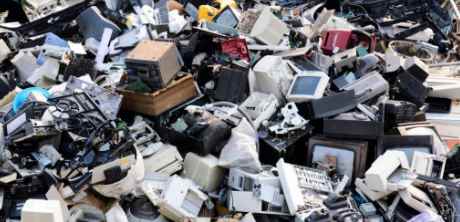When referring to worn electronics that are near to being obsolete and are discarded, given, or sent to a recycler, the terms 'e-waste,' 'electronic garbage,' 'e-scrap,' and 'end-of-life electronics' are widely used. The UN defines electronic waste as any discarded item that has a battery or plug and contains dangerous and toxic elements, such as mercury, that pose a major threat to both human and environmental health.
The UN estimates that in 2021, there would be a staggering 57.4 million tonnes of electronic waste produced globally, with each person producing an average of 7.6 kg. Only 17.4% of this electronic waste, which is made up of a combination of hazardous materials and priceless resources, will be noted as having been properly collected, handled, and recycled.
Environmental Threats
E-waste can be poisonous, is not biodegradable, and builds up in the earth, air, water, and living things. In order to recover valuable materials from electronic components, for instance, open-air burning and acid baths produce harmful compounds that seep into the environment. As a result of these procedures, employees may be exposed to high concentrations of pollutants such polychlorinated biphenyls (PCBs), brominated flame retardants (BFRs), lead, mercury, beryllium, thallium, cadmium, and arsenic.
These toxins have been linked to cancer, miscarriages, neurological damage, and lower IQs.According to a 2019 joint paper titled 'A New Circular Vision for Electronics - Time for a Global Reboot,' a regenerative system can minimise waste and energy leakage and advocate for a new vision for e-waste based on the circular economy concept. The report backs the efforts of the E-waste Coalition, which is comprised of the Secretariats of the Basel and Stockholm Conventions as well as the ILO, ITU, UNEP, UNIDO, UNITAR, and UNU.
The paper claims that inappropriate management of e-waste is causing a considerable loss of rare and costly raw materials, including precious metals like neodymium, which is essential for magnets in motors, indium, which is used in flat-panel TVs, and cobalt (for batteries). Rare earth minerals are difficult to mine and are almost never retrieved from informal recycling. However, metals in e-waste are challenging to remove; for instance, overall cobalt recovery rates are barely 30% (despite technology being available that could recycle 95%).
However, the metal is very popular for use in laptop, smartphone, and electric vehicle batteries. Compared to metals smelted from virgin ore, recycled metals are also two to ten times more energy efficient.7% of the energy used globally in 2015 was for the extraction of raw materials. This indicates that increasing the use of secondary raw materials in electronic goods could significantly aid in achieving the goals outlined in the Paris Agreement on climate change.
Global Warming
Considering how technological advancements affect climate change is also crucial. A carbon footprint is left behind by every product ever produced, which contributes to the human-caused global warming. The manufacturing of one tonne of computers could result in the discharge of ten tonnes of CO2.
When a device's lifetime carbon dioxide emissions are considered, the majority occur during production, prior to customers buying a product. In order to determine the overall environmental impact, it is essential to consider low-carbon production processes and inputs (such as employing recycled raw materials) as well as product lifespan.
Insufficient recycling
The world has low recycling rates. Only 35% of e-waste is reportedly collected and recycled effectively, even in the EU, which leads the world in this area. The average amount is 20% worldwide; the remaining 80% is unaccounted for, with much of it being used as landfill and eventually being buried for millennia. Electronic garbage cannot biodegrade.
The worldwide electronic sector is severely hampered by a lack of recycling, and as gadgets multiply, get smaller, and get more complicated, the problem only gets worse. Currently, it costs money to recycle various forms of e-waste and recover materials and metals. A more difficult issue is the remaining bulk of e-waste, which is primarily made of polymers mixed with metals and chemicals.




Leave Comment